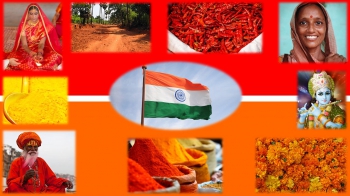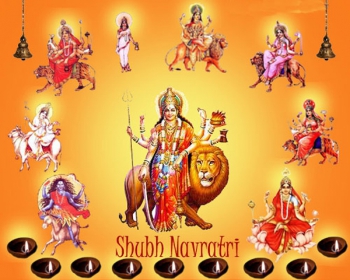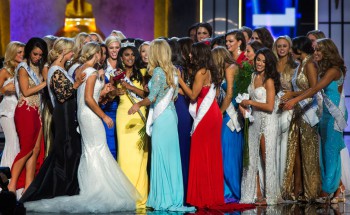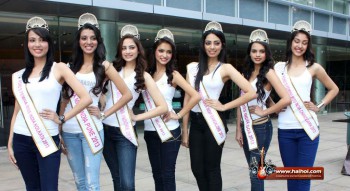09/25/2017
Why in India people don't wear black?
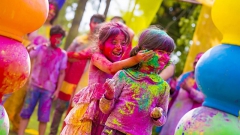 In India, colors are waltzing, everywhere, all the time. No need to wait for Holi, the festival where everyone throws colored powders and bombs to water at each other, to see red, yellow, purple, pink shimmering under the almost-daily sun. Indians wear colours on them, and it looks good. Especially Indian women.
In India, colors are waltzing, everywhere, all the time. No need to wait for Holi, the festival where everyone throws colored powders and bombs to water at each other, to see red, yellow, purple, pink shimmering under the almost-daily sun. Indians wear colours on them, and it looks good. Especially Indian women.
But why so many rainbows and no black? Is it because they see life in pink? Or because black attracts the sun's rays? If that was the reason, would it mean that Muslim women in desertic countries wearing dark colour niqabs or burqas are masochists?  Apparently, according to the Koran, black is not compulsory, whatever women cover themselves with must just be ugly, or at least it should be dull enough to not attract the (lusty) gaze of men – so much in European countries, where they get stared at for the same purpose of wearing a niqab or even just a hijab! So why do they chose black for this type of clothing? According to some, under a dark garment, as this color absorbs heat, it is so hot that you sweat, which in turn cools you down; It’s by the way the same explanation for the drinking of hot tea in burning countries. In India, the theory for tea was adopted, but not for wearing black.
Apparently, according to the Koran, black is not compulsory, whatever women cover themselves with must just be ugly, or at least it should be dull enough to not attract the (lusty) gaze of men – so much in European countries, where they get stared at for the same purpose of wearing a niqab or even just a hijab! So why do they chose black for this type of clothing? According to some, under a dark garment, as this color absorbs heat, it is so hot that you sweat, which in turn cools you down; It’s by the way the same explanation for the drinking of hot tea in burning countries. In India, the theory for tea was adopted, but not for wearing black.
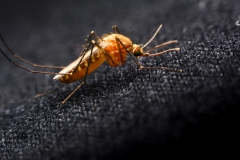 But why? Why is black colour has a negative connotation in spirituality and superstition (1)? Would it simply because it attracts mosquitoes, according to the popular belief – or at least to the belief of my nanny and my neighbor? CNN says it’s a myth. But the expert, in the interview, also says that what attracts mosquitoes is the carbon dioxide emitted by the body and the body heat. It goes in the sense of Muslim theories: we sweat more under a dark garment, and therefore the skin produces more carbon dioxide; and more definitely more heat since black absorbs it from the sun. So maybe it’s not completely a myth. And myth or not myth, I have noticed that mosquitoes prefer to rest on the dark things (door, bed, mirror) rather than on my white walls - and I have always thought they were shrewd enough to master camouflage techniques! (PS: did you know? Mosquitoes feed on plant nectar and don’t need blood as food but as a protein intake related to reproduction; vampires are all females!)
But why? Why is black colour has a negative connotation in spirituality and superstition (1)? Would it simply because it attracts mosquitoes, according to the popular belief – or at least to the belief of my nanny and my neighbor? CNN says it’s a myth. But the expert, in the interview, also says that what attracts mosquitoes is the carbon dioxide emitted by the body and the body heat. It goes in the sense of Muslim theories: we sweat more under a dark garment, and therefore the skin produces more carbon dioxide; and more definitely more heat since black absorbs it from the sun. So maybe it’s not completely a myth. And myth or not myth, I have noticed that mosquitoes prefer to rest on the dark things (door, bed, mirror) rather than on my white walls - and I have always thought they were shrewd enough to master camouflage techniques! (PS: did you know? Mosquitoes feed on plant nectar and don’t need blood as food but as a protein intake related to reproduction; vampires are all females!)
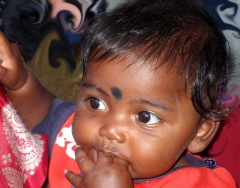 (1) Black is the color of evil, negativity and inertia; It symbolizes anger, darkness and is associated with the lack of energy, death though it is not the color of mourning. As a representation of evil, it is also used to combat the latter – take the form of the enemy to defeat him – as can be seen in the black dot applied on the face of infants to keep the dark evil eye at bay.
(1) Black is the color of evil, negativity and inertia; It symbolizes anger, darkness and is associated with the lack of energy, death though it is not the color of mourning. As a representation of evil, it is also used to combat the latter – take the form of the enemy to defeat him – as can be seen in the black dot applied on the face of infants to keep the dark evil eye at bay.
White is the absence of color; It’s the ‘non-color' worn at funerals and by widows throughout the rest of their lives, as a sign of renouncing all the pleasures/colors of life.
Red symbolizes violence, the fire that burns and therefore also the purity – in India fire has purifying virtues. It is also the color for the bride’s sari. Red also has connotations of sensuality, fertility and prosperity. Women wear a red dot on the forehead (see more about tilak, sindoor and bindi here). Favorite chilis are red. The super fertile earth is red in some areas. Orange or saffron, is the real color of fire and purity; When it is worn, it indicates its bearer has renunced the world and is in a quest for the sacred.
The yellow of the turmeric symbolizes holiness, blue is associated with the god Krishna, green represents renewal and joy. If you dig a little more, each color is associated with a certain God or goddess and represents its main qualities.
During the Holi festival: the pigments they throw at one another have very specific meanings: green for harmony, orange for optimism, blue for vitality and red for joy and love” (source: Wikipedia).
Another example is the color dress code to be observed during Navratri (from 21 to 29 September this year). Each of the 9 days of the festival is dedicated to one of the forms of the goddess Durga.
- Day 1 - Pratipada, goddess as ‘daughter of the mountains’ and consort of Shiva – Red for action and strength
- Day 2 - Brahmacharini, dispenser of happiness and prosperity – royal Blue for a quiet but powerful energy
- Day 3 - Chandraghanta, the goddess with a half moon on the forehead represents the beauty and the courage of the one fighting against the demons – Yellow, color that warms the heart
- Day 4 - Kushmanda, who created the universe covered with green vegetation – Green
- Day 5 - Skand Mata, who holds the infant Karthik in her arms – Gray for the vulnerability of the mother (who can turn into storm clouds to protect her little)
- Day 6 - Katyayani, when she was reborn as the daughter of the sage Kata as per his wish – Orange for courage
- Day 7 - Kalratri, black as night and very angry – White as her garment, and for peace and prayer
- Day 8 - The goddess is dressed in pink and destroys all sins of all times – Pink for a fresh start and renewal
- Day 9 - Siddhidatri with supernatural powers of healing – light Blue, like the cloudless sky
Sources: http://www.sensationalcolor.com/color-meaning/color-around-the-world/India-country-symbolic-colors-1935#.WB-kCMbYXIU ; https://www.theindusparent.com/significance-of-colours-in...
https://www.nbcnews.com/health/why-some-people-are-mosqui... ; http://Edition.CNN.com/2014/07/04/health/mosquito-bites-m...
08:00 Posted in Funny things about India in photos, Why in India... | Permalink | Comments (0) | Tags: india, colours, black, white, red, orange, blue, religion, spirituality, holi, navratri, durga, colour code, red dot on the forehead | ![]() Facebook | |
Facebook | |
10/22/2013
Why in India there is a caste system?
After 7 years in India, I obviously wrote quite a bit on the subject (see below). I have sometimes been revolted against this system. I have accepted it. Ignored it. Forgotten it.
It is not so much this system – let us be realistic, every society is divided in social classes – but its rigidity that disturbs so much… Your caste (which you are born in) defines what you will do, eat, marry etc.
I have never really searched where this system comes from… 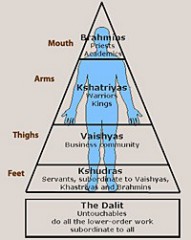
According to ancient Hindu books, human society was created from a body: the Brahmins would come from the head, the Kshatriyas from the hand, the Vaishias from the thighs and the Sudras from the feet. In some versions, the original body would be of a primeval giant, Purusha, sacrificed by the gods to create a human society; in others it would be Brahma.
All animated and inanimated things are believed to possess three qualities, in different proportions: Sattva, Rajas and Tamas. Brahmins would be loaded with Sattva qualities (which include wisdom, intelligence, honesty, goodness and other positive qualities); Kshatriyas and Vaishias with Rajas qualities (passion, pride, valour and other passionate qualities); Sudras with Tamas qualities (dullness, stupidity, lack of creativity and other negative qualities). Hence the different occupations that each people would occupy. And the different diets and different dosages of food they would need to develop their inherent qualities. For instance meat is considered Tamasic food but also Rajasic.
It seems likely to me that these two explanations were developed to support a system with social-historic roots. Which brings us back somewhere around 2000 years BC when the Harappan civilization of the Indus Valley started to decline and the Aryans (Indo-European speakers from Central Asia), a group of warrior nomads began to migrate. There is no agreement between scholars whether “the Aryans and Harappans mixed together and became peaceful, or the Aryans came in as a conquering people, became the ruling class, and instituted the caste system to maintain control”.
However, and this is my personal observation, the stratification of the society in India is clearly linked to the skin colour. The fairer the higher in caste, the smarter, the richer, the more beautiful. At least it is perceived like this. And it’s no new thing. One should see how a baby can stare at a white person. And I have met very few Indians who don’t have, somewhere, an inferiority – totally unjustified and difficult to understand for me – complex toward white skinned. And I don’t think it can only be the result of the British colonisation… Just read old Hindu religious stories: “there are many wars between the good Aryans and the dark skinned demons and devils”.
Somehow the organisation of the Aryans in three groups (the Rajayana which became the Kshatrias (warriors), the Brahmins (priests) and the Vaisias (farmers and craftsmen) , which is pretty logical and easy to adopt, spread on to the local society. Later on, “communities who professed non-polluting jobs were integrated in Sudra Varna and communities who professed polluting professions were made outcasts”.
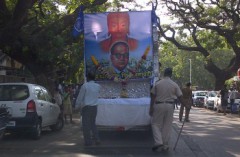 So it was convenient for the rules to keep the system that way – as it would be for any ruler in any society. Rules were strict and abided by. Religion (as Hinduism is mostly a canvas of superstitions) was also used to keep everyone on the right track in fear of retaliation. And what makes India different from other countries is that people don’t really rebel against the order of things, and neither does religion decline. They do at times – see how the Untouchable Ambedkar encouraged Hindus to convert to Buddhism in reaction to the caste system, and how such conversions of dalits still happen nowadays, for instance for the 50th anniversary of the leaders’s death* – but fundamentally the society remains the same…
So it was convenient for the rules to keep the system that way – as it would be for any ruler in any society. Rules were strict and abided by. Religion (as Hinduism is mostly a canvas of superstitions) was also used to keep everyone on the right track in fear of retaliation. And what makes India different from other countries is that people don’t really rebel against the order of things, and neither does religion decline. They do at times – see how the Untouchable Ambedkar encouraged Hindus to convert to Buddhism in reaction to the caste system, and how such conversions of dalits still happen nowadays, for instance for the 50th anniversary of the leaders’s death* – but fundamentally the society remains the same…
Is the caste system still present and visible in cities?
“Either it doesn’t really prevails in my world (personal and professional), either it is too subtle for me – at the same time I don’t really dig”.
However read my story of the fat superior Indian giving a lesson to a waiter:
(24/04/2013)
Do Indian people rebel against this system?
“In the countryside, the caste system prevails.
Read the story of Sampat Pal, a shepherdess who, with her Pink Sari gang, rebelled against the injustices inflicted to lower castes by higher castes or to women by men, against corruption and stealing of subsidised food, lands, jobs which the Government reserves for the poorest.”
(20/04/2013)
The issue of castes and quotas in today’s society
“The Indian Constitution prohibits discrimination based on caste.
That said it does not belong to the Government to abolish such a system because it is related to religion. As a matter of fact, the last census (2011) included a (optional) question about the caste.
Casteism is a pillar of Hinduism: "the fulfilment of one personal duty to the caste - and not a universal duty - and the system of reincarnation in a higher or lower caste as a reward for your good or bad actions are the two fundamental pillars of this religion until the final liberation and paradise.")
To fight this discrimination, the Government has implemented quotas for access to education, civil servant positions, political seats. There even has been an untouchable president (K. R. Narayanan).
The problem is that today it is all mixed up and ultimately these quotas are based on the social status (caste) of people but not on the merit or the income. And as low and out-castes form a majority, politicians are struggling to change this system...”
www.indiandacoit.com/archive/2013/04/22/about-casts-and-inequalities-in-india-the-big-picture.html
22/04/2013
What about the lower castes and outcastes? And how do Westerners see it?
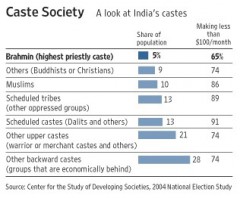 In India people referred to other compatriots as “uneducated” all the time. A term a bit shocking to a French. As the word “backward” to refer to a class of people in the lower castes.
In India people referred to other compatriots as “uneducated” all the time. A term a bit shocking to a French. As the word “backward” to refer to a class of people in the lower castes.
“According to the last census (source: http://www.censusindia.gov.in/2011census) « Intouchables » and the tribes represent 30% of the Hindu population / 24% of the Indian population. And if you add the ‘feet’ (kshudras or lower castes) you get 54% of the population.”
http://www.indiandacoit.com/archive/2011/04/14/and-you-what-s-your-little-name.html#more 04/05/2011
Marc Boulet wrote “In the skin of an Intouchable” – he basically learned Hindi perfectly, took drugs to get a tan and lived on the street as an Intouchable beggar for months…
“Westerners completely fall for it. They rightly fight racism and anti-Semitism but they see the caste system with a lot of indulgence and consider that it is part of the Indian cultural heritage, like the Tâj Mahal. They don’t get shocked, outraged, by the caste system; it is far away. And I also think that their benevolence comes from the fact they admire the brahman civilisation and they get disgusted by sweepers and other untouchables, altogether with beggars and lepers for whom they only think of a contemptuous charity. […] I am not scared of words anymore. The caste system is a segregationist system, just as Apartheid in South Africa. As revolting, as condemnable.”
http://www.indiandacoit.com/archive/2011/05/04/untouchables-again.html
14/04/2011
http://adaniel.tripod.com/origin.htm
http://www.thenagain.info/webchron/india/AryanMig.html
http://www.ambedkar.org/Babasaheb/Why.htm
08:00 Posted in Why in India... | Permalink | Comments (0) | Tags: india, ambedkar, caste, castes, cast system, religion, society, census, lower castes, outcasts, pink sari gang, backward, marc boulet, casteism, hinduism, sattva, rajas, tamas, aryans, fair, skin complexion, white | ![]() Facebook | |
Facebook | |
09/22/2013
A Miss America of Indian origin!
Tastes and colors are not to be argued...
And since people always want what they don’t have, Asians have surgery to “un-slant” their eyes, Blacks straighten their hair, Whites burn their skin in the sun...
Indians are no exception to the rule and skin-whitening cosmetics are as successful as they can be damaging for the skin.
On this topic, I wrote on this blog five years ago: “Indian models are successful abroad and foreign models are successful in India: everything is balanced!”
And 2013 Miss America turns out to be of Indian origin!
Now compare the complexion of Miss America 2013 and the contestants to Miss India 2013. Funny isn’t it? Not sure Nina Davuluri, the American crowned model, would win a beauty pageant in India!
08:00 Posted in Funny things about India in photos, Incredible India! | Permalink | Comments (1) | Tags: miss america, miss india, skin, skin colour, fair, white, racism, dark, model, nina davuluri, femina miss india 2013, miss america 2013, whitening creams | ![]() Facebook | |
Facebook | |















